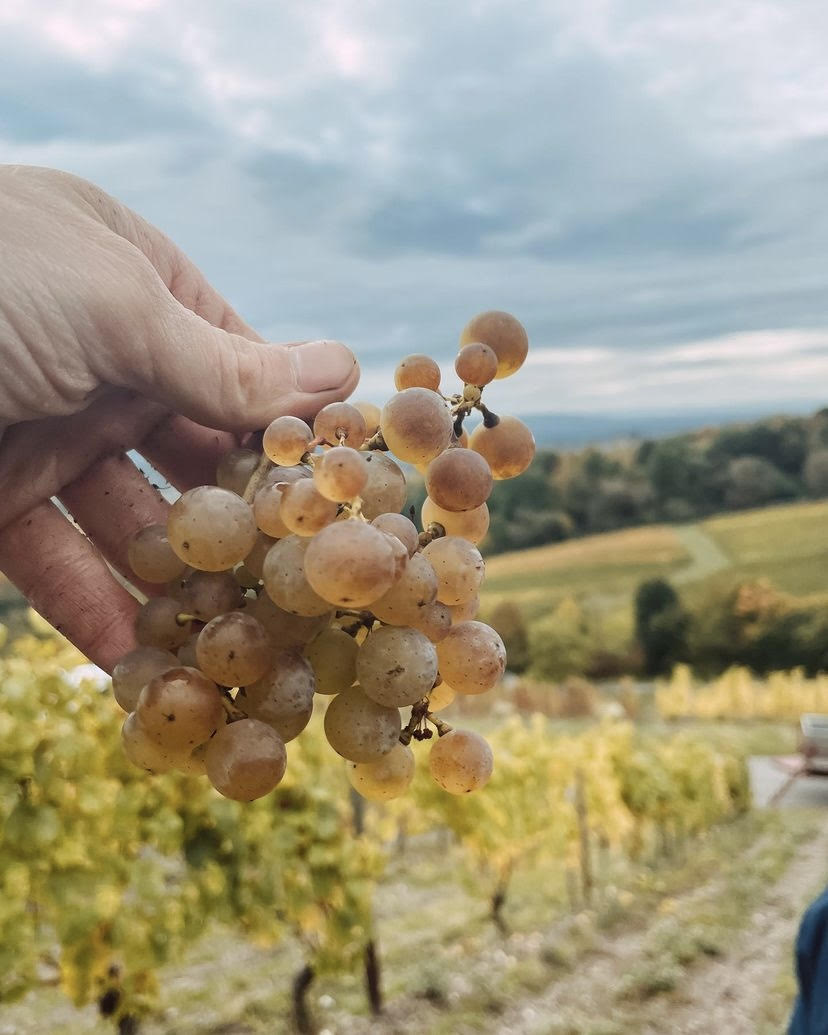
Sweet, Fruity, or Both?: The Truth About Sweetness in Wine
Sweet is often thrown around as a casual descriptor of wine. But while there are undeniably sweet—and sometimes very sweet—wines, the term is often unintentionally misused. It’s not uncommon to hear a wine described as sweet even if, objectively speaking, it is not.
So, when is a wine sweet?
What the Pros Say
Sweet does have a technical definition: when a wine has more than 30 grams per liter of residual sugar (often referred to as RS). Wine with less than 10 grams per liter of residual sugar are considered dry or the opposite of sweet. Anything in between is deemed off-dry, semisweet, or medium sweet, depending on the level of residual sugar.
Residual sugar comes from the natural sugar in the grapes—the riper the grapes, the more sugar they have. The fermentation process converts that sugar into alcohol with the help of yeast and once complete, any leftover sugar is measured in grams per liter.
The amount of residual sugar will vary depending on the variety and style. Dessert wines, like Sauternes from Bordeaux and Vin Santo from Tuscany, will have higher levels, and even lower-priced bulk wines might have some perceptible sweetness—the addition of extra sugar can add richer texture and smooth out the rough edges of an inexpensive wine.
These indicators from Wine Folly give a sense of how residual sugar is measured in terms of sweetness:
Dry (0-9 g/l RS)—The majority of red and most white wines fall into this category.
Off-dry (10-18 g/l RS)—Off-dry wines include demi-sec Vouvray, extra dry Champagne, and Lambrusco secco.
Medium Dry and Semisweet (19-50 g/l RS)—Medium dry/semisweet wines include demi-sec Vouvray, demi-sec Champagne, halbtrocken and sweet Riesling, Sercial Madeira.
Medium Sweet (51-120 g/l RS)—Moscato d'Asti, Moscato, Lambrusco dolce, Port, and Verdelho Madeira, and Boal Madeira are medium sweet wines.
Sweet (121 g/l and above RS)—Often called dessert wines, Sauternes, Tokaji, ice wines, some Rieslings, Malmsey Madeira, and Recioto della Valpolicealla fall into this category.
Sweet or Fruity?
How sweetness is perceived is highly individual. Some people devour cotton candy with pleasure, while others find it toothachingly sweet. The riper and more aromatic the grape—such as Gewürztraminer—the more likely the fruitiness will be perceived as “sweet,” even if the wine is fermented to dryness.
Additionally, how fruit flavors interact with alcohol, tannins, and acidity also influence how much sweetness is perceived in the wine.
Sweetness has a weightiness that can coat the tongue, and wines that are high in acidity—like Riesling—can reduce how much of that sweetness is detected. This is why some off-dry, or even medium dry, wines can taste dry on the palate.
Sweetness ≠ Flavor
We’re often told which fruits or other flavors that we're supposed to be tasting in a wine, but those should be considered guidelines. You know your palate best, and you should trust what you taste.
However, the language we use to describe what we taste—and what we prefer to drink—does matter. Sweet is a descriptor that is often misunderstood and misused, leading many down the wrong path when trying to find wines they will truly enjoy.
This is where speaking the same language is key. If someone says they like a wine that is sweet—when what they really want is a fruit-forward wine—they might be recommended a wine with perceptible residual sugar.
Cultivating your wine vocabulary can help avoid these pitfalls. You might have seen from our post on making this your best year in wine that strengthening your wine toolkit—including brushing up on common wine terminology—can help you describe more accurately what you like (and don’t like) about a wine.
If you’re looking for a wine with a higher level of sugar, asking for a sweet wine is the way to go. But if you’re actually thinking of a wine that has plenty of ripe fruit flavor, describing it as fruity or fruit forward will lead you to the wines you want to drink.

